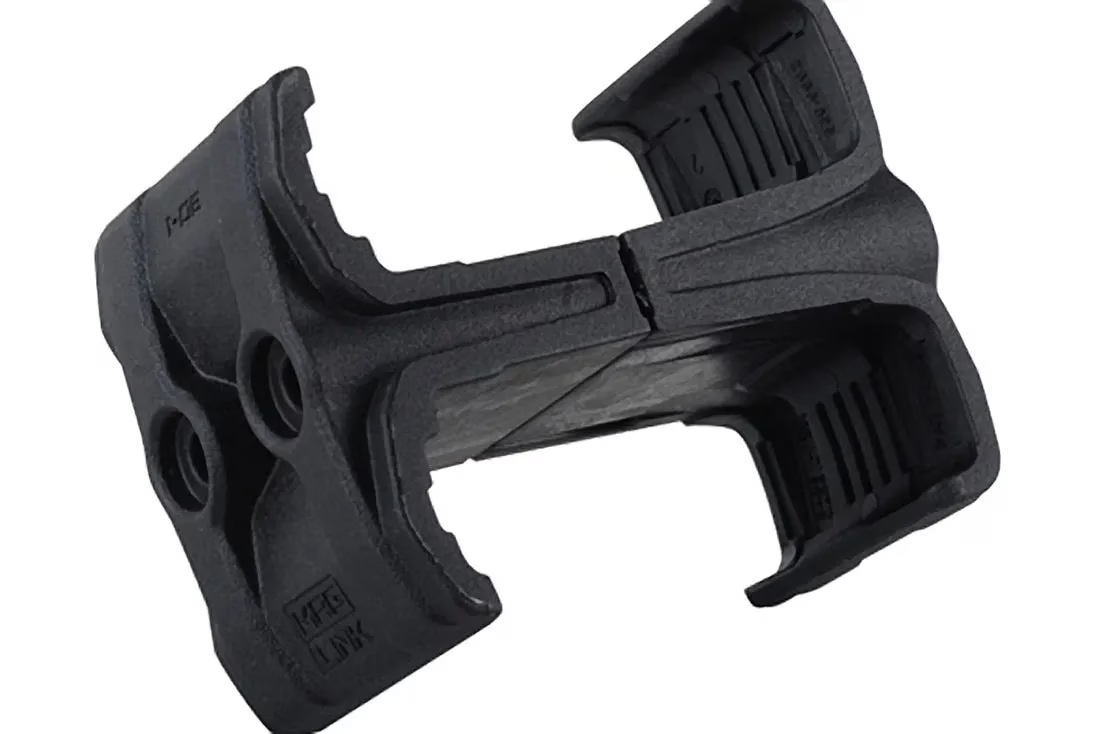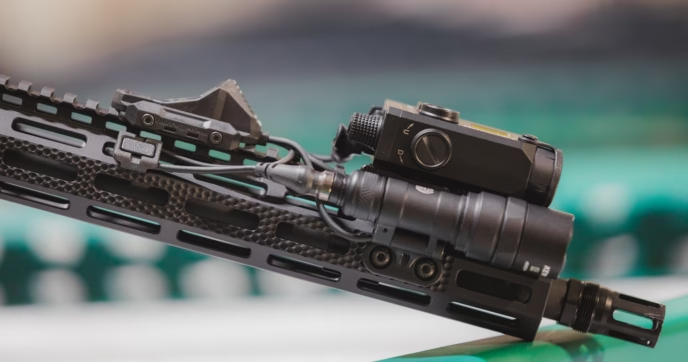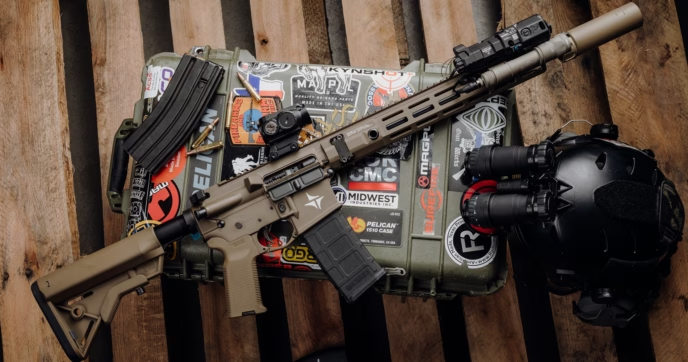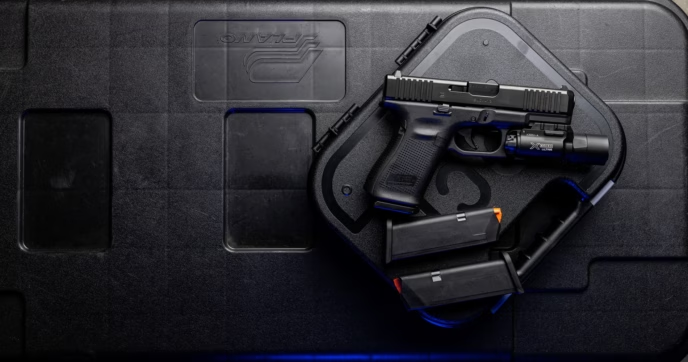Renowned for its adaptability, the AR-15 can be tailored to fit just about every application and scenario, as all the rifle’s core components can be easily swapped out for others, allowing for total user customization.
While in the past, parts like individual trigger groups, handguards, and even muzzle devices have been looked into extensively, arguably one of the most vital components of the AR-15—the magazine—often goes overlooked.
On their own, a standard AR-15 magazine does its job rather well, but as the parts aftermarket for the AR-15 has continued to grow, there are several magazine options to choose from, as well as accessories that go alongside them.
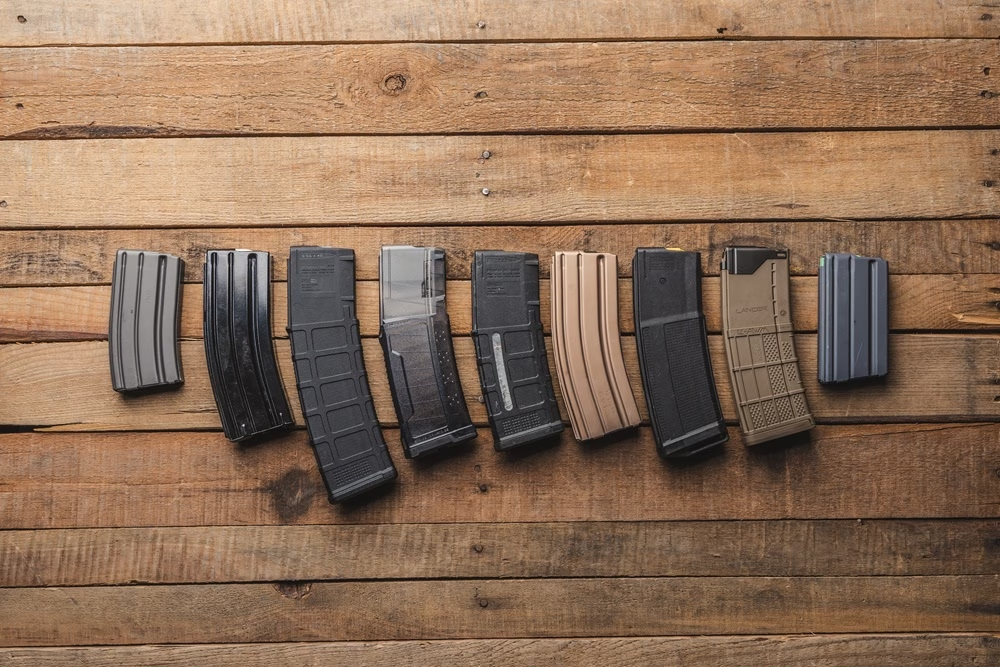
Choosing Quality Magazines
Like we said above, magazines are easily some of the most critical AR-15 accessories, so if you want any kind of reliable performance out of your rifle, having high quality magazines is paramount. Although magazines aren’t in any short supply these days, not all of them are created equal—as such, it’s important to know what to look for when shopping for one.
Magazines typically consist of four main components: the magazine body, follower, follower spring, and the magazine base, each of which are vital to ensuring reliability.
Magazine Body: Metal or Polymer?
Historically, AR-15 magazine bodies were made of metal, usually aluminum or steel. While metal magazines are still immensely popular, polymer magazines are often viewed as the current industry standard. Having been adopted by multiple U.S. Military Branches and Law Enforcement Agencies, they have a battle-proven track record of maintaining reliability despite being used in harsh conditions. Still, metal USGI-spec magazines are widely produced and have long been used by multiple Service Branches and Agencies.
Brands like Magpul and Lancer Systems produce their magazines with specialized polymers that allow them to withstand harsh use in adverse conditions, while brands like E-Lander, DURAMAG, and D&H Industries continue to produce both aluminum and steel magazines that retain the same quality as mil-spec STANAG magazines. Since they’re all exceptionally durable, the choice between going with either metal or polymer magazines ultimately comes down to user preference, but rest assured, you can’t really go wrong with either option.
Magazine Internals
While having a rigid outer body is crucial for withstanding the rigors of everyday use, a magazine’s internals are just as important as far as functionality is concerned. The follower, as its name suggests, follows the rounds loaded within the magazine, keeping them aligned so they can be fed into the rifle with no issues. Meanwhile, the follower spring provides the force necessary to drive the follower and cartridges towards the top of the magazine so they can be picked up by the BCG when firing. Lastly, the magazine base holds all the internal components within the magazine body. OEM magazine bases are typically fine on their own, but they can be upgraded later to offer more versatility. However, we’ll go further in-depth on that below.
For the most part, you won’t need to stress out about your magazine’s internals. Each of the brands mentioned above makes use of top-tier materials that are designed to offer peak reliability. Still, it’s always a good idea to check your prospective magazine’s specs before making any final decisions, just as a precaution. Plus, if needed, you can always upgrade these components later.
Maximizing Performance
While standard AR-15 magazines are ready to go out of the packaging, that doesn’t mean they don’t have room for improvement. As mentioned earlier, there are several magazine accessories available that are designed to enhance everything from reload speed to their overall versatility in different applications.
Essential AR-15 Magazine Accessories
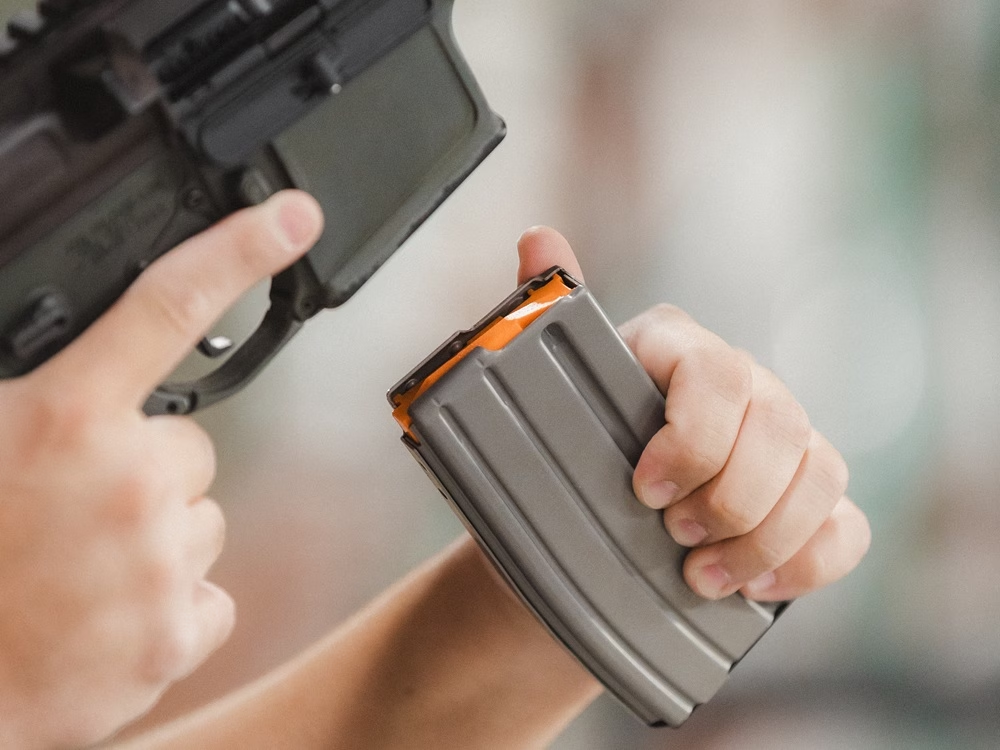
Enhanced Magazine Releases
While not an upgrade for the magazine itself, an upgraded AR-15 mag release can go a long way towards enhancing your ability to quickly and efficiently reload your rifle. While there’s nothing inherently wrong with the standard mil-spec magazine release, it isn’t necessarily the most conducive for fast reloads. Upgraded magazine releases can come in many varieties, ranging from release button replacements to entirely new assemblies.
Release buttons like the Geissele Ultra Duty magazine release, despite being the same size as a mil-spec button, features aggressive texturing and a more durable design that provides you with a better tactile feel of the magazine release. Moreover, Magpul’s Enhanced AR Magazine Release has a button extension that provides more surface area for you to actuate the magazine release, which is better for high-stress scenarios where you may miss the button accidentally.
While both options are a more-than-practical choice for most enthusiasts, if you’re left-handed, you can benefit immensely from a dedicated ambidextrous magazine release. Models like the Forward Controls Design ambidextrous magazine release are compatible with all mil-spec lower receivers and have an extended latch that sits on the left side of the receiver allowing you to drop your magazine regardless of your dexterity or position. And to further enhance your setup, you can run it in conjunction with the upgraded buttons mentioned above for optimal control of your rifle.
Magazine Couplers
A magazine coupler allows you to join two magazines together to make reloading much quicker. Instead of needing to reach for a fresh magazine, you can simply switch over to the coupled one. Not only does this make reloading faster, but you’ll also effectively double your ammo capacity. Reloading coupled magazines can be a bit awkward at first, but with some practice, the process is easy to pick up on—to get the fundamentals down, we recommend practicing dry-fire reloads at home with 5.56 dummy rounds.
Before you go off to buy a magazine coupler, it’s crucial to recognize that not every magazine is compatible with them. For common magazines, like PMAGs and USGI-pattern magazines, you can usually find couplers with no issues. However, if you run less common magazine patterns, you might not have as many options to choose from, if any at all.
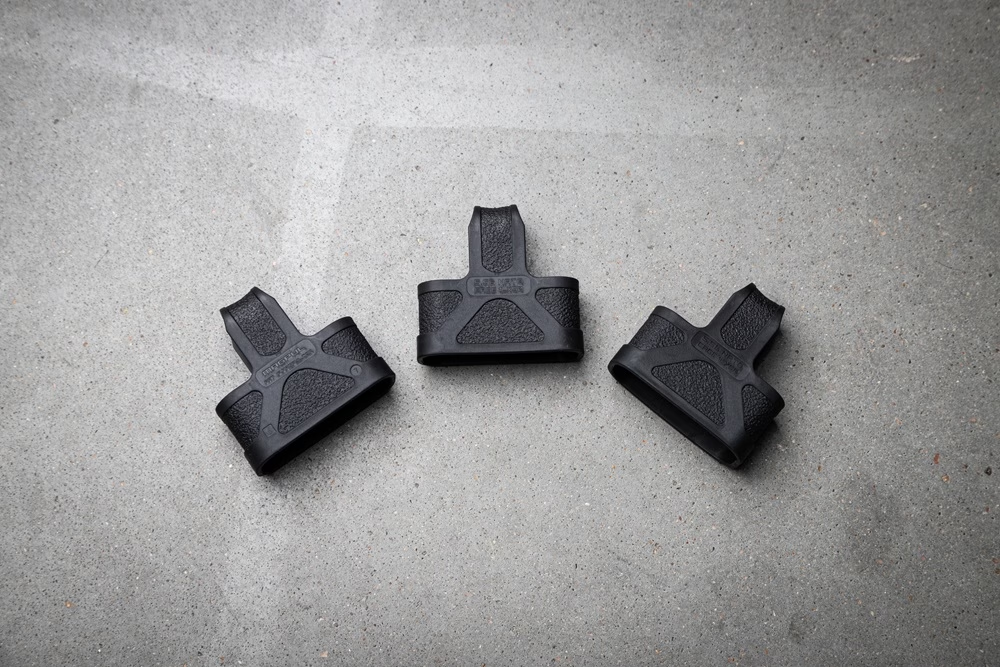
Ranger Plates and Magazine Pulls
For those who train with plate carriers or chest rigs, Magpul ranger plates and magazine pulls can be a solid upgrade that gives you rapid access to your magazines. Replacing your magazine’s bottom plate, ranger plates feature a large loop and flared edges that provide extra grip when pulling them out of your mag pouches. Currently, they’re available for both PMAGs and USGI-pattern magazines, but if you aren’t keen on switching out your bottom plate, you can always opt for Magpul’s magazine pulls.
Magpul Magazine pull tabs are made from rubber and simply slide over the bottom of your magazine. Their tight fit keeps them from slipping off unintentionally, and they’re a solid alternative to ranger plates that’s compatible with just about every magazine option.
Other Popular Magazine Accessories
5-Round Magazines
While not an accessory, 5-round magazines are worth considering as several states and sport shooting applications require the use of them, as even in states where they aren’t a necessity, they’re commonly used by hunters and precision shooting enthusiasts. Although hunting with an AR-15 is legal in many states, state and local laws may require the use of 5-round magazines, and for precision shooting disciplines, 5-round magazines don’t protrude that far past the mag well, making it easier to go prone for a more stable shooting position.
It’s worth pointing out that 5-round magazines aren’t entirely necessary to take part in such activities. Though this depends heavily on your application and state you live in, you may be able to make use of a Magpul 5-round magazine limiter. Available in a three pack, they’re compatible with all Gen M3 PMAGs, and can transform your 10-round magazines into a 5-round one, allowing you to meet any sporting or hunting requirements without needing to buy new magazines. Still, we recommend checking your state and local laws regarding capacity restrictions before making any purchases.
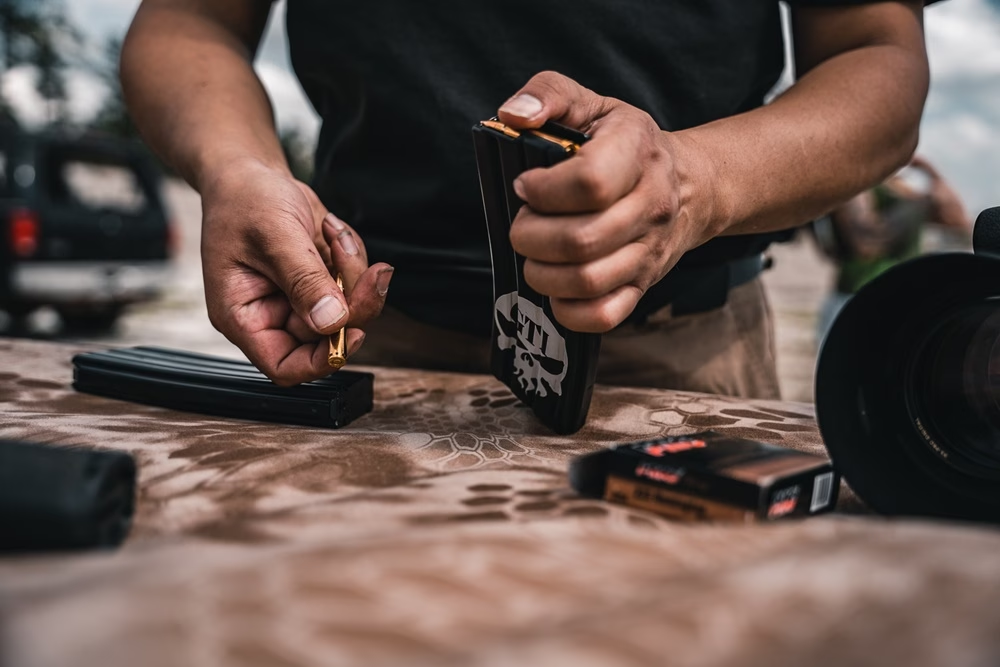
Magazine Loaders
Serious training means you’ll be spending a lot of time loading a lot of magazines. Not only does this take a considerable amount of time, but it can fatigue your hands quickly. Fortunately, you can speed up the process with an AR-15 magazine loader. These loaders are available in a few different configurations, but they all serve the same purpose.
Minimalistic options like the Maglula AR-15 Loader are some of the most budget-friendly. They fit on top of your magazine and make use of a lever to depress the follower for quick loading. Additionally, models like the StripLULA function like a stripper clip, allowing you to easily load up to 10-rounds at a time. Lastly, options like the Magpump magazine loader are a more premium option that’s hopper fed and can hold up to 90 rounds. It works via a specialized pump design, allowing you to easily load multiple magazines in quick succession.
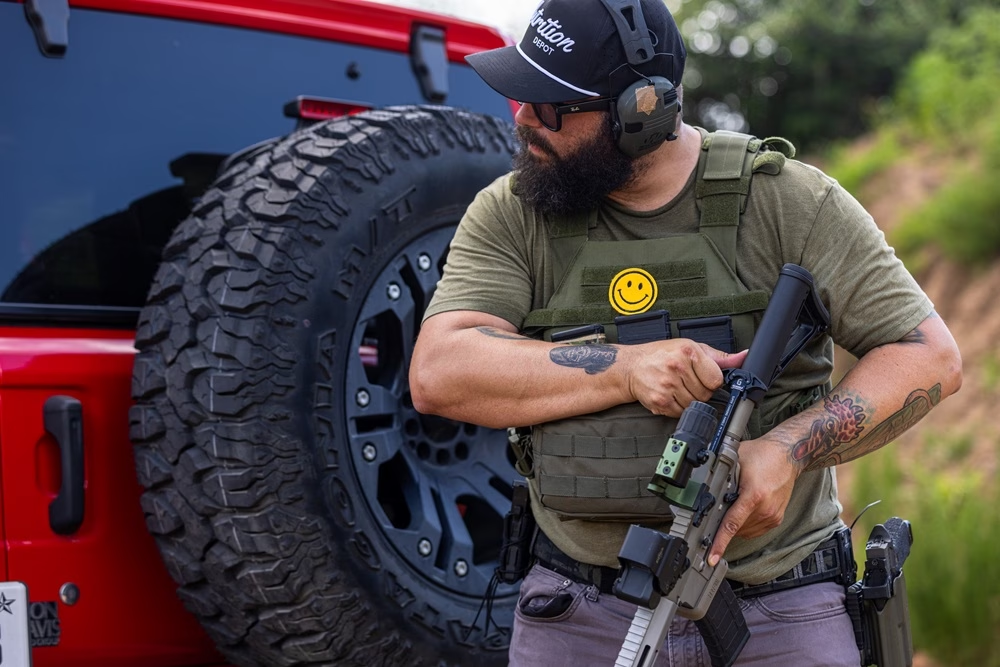
Which Accessories are Right for You?
If you’re new to the AR-15, there’s a good chance you’re dealing with analysis paralysis after reading about all the different accessories that are magazine specific. However, it’s important to consider that they aren’t all necessary for every enthusiast.
Your choice of magazine, as well as your choice of accessories is going to depend greatly on your build and priorities. For instance, if you’re primarily planning to use your rifle in a defensive capacity and the occasional range trip, you don’t necessarily need all the accessories mentioned above. So long as you choose a high-quality magazine with a capacity that fits your preference/state restrictions (if applicable), you’ll be good to go.
Conversely, if you’re building out a rifle for tactical training, duty, or dynamic competitions, having the right magazine and accessories becomes more of a priority. The added durability of high-quality polymer and metal magazines ensures reliability in tough conditions, while enhanced base plates can add some extra durability for your mag when dropping them during fast reloads.
Ultimately, your choice of how you configure your rifle and magazines is completely up to your discretion. As such, it’s imperative that you take a step back and evaluate how you plan to use your rifle. Doing so will go a long way in helping you determine what all is truly necessary for your build.
Maintaining your Magazines
Much like with your rifle, regular cleaning and maintenance is a must for your magazines. However, unlike your rifle which should be cleaned after each range trip, the frequency in which you need to clean your magazines ultimately depends on how often you use them, as well as the environments you use them in.
In adverse conditions where your magazine is exposed to dirt, mud, and any other kinds of debris, they may need more frequent maintenance. If any debris gets into your magazine, it will have a serious impact on its performance. For more casual enthusiasts though, a good rule of thumb is to perform a simple function check to make sure everything is still in working order. If it isn’t, you can disassemble your magazine by removing the bottom plate, which will let the spring and follower fall out of it. Afterwards, you can clean everything with solvents and CLP, and after reassembly, it’ll be good to go for your next range trip.
Conclusion
Magazines are by far one of the most critical components of the AR-15, so it’s paramount to make sure that you not only have high-quality magazines for your build, but also the right accessories to enhance their performance. Brands like Magpul, DURAMAG, Lancer Systems, E-Lander, and D&H Magazines are renowned for their top-tier magazine options, and they each offer an assortment of models to choose from.
Upgrades and accessories like enhanced magazine releases, couplers, ranger plates, and pull tabs can dramatically improve your reload speed, especially in high-stress scenarios. Meanwhile, 5-round magazines will keep you compliant with any competitive, hunting, or state restrictions (if applicable), and magazine loaders will reduce any strain on your hands while also speeding up the loading process.
Although such gear and accessories aren’t 100% necessary at the end of the day, they can drastically improve your overall performance when using your rifle. So, if you’re looking for some simple, yet effective upgrades, they can be a great place to start.

